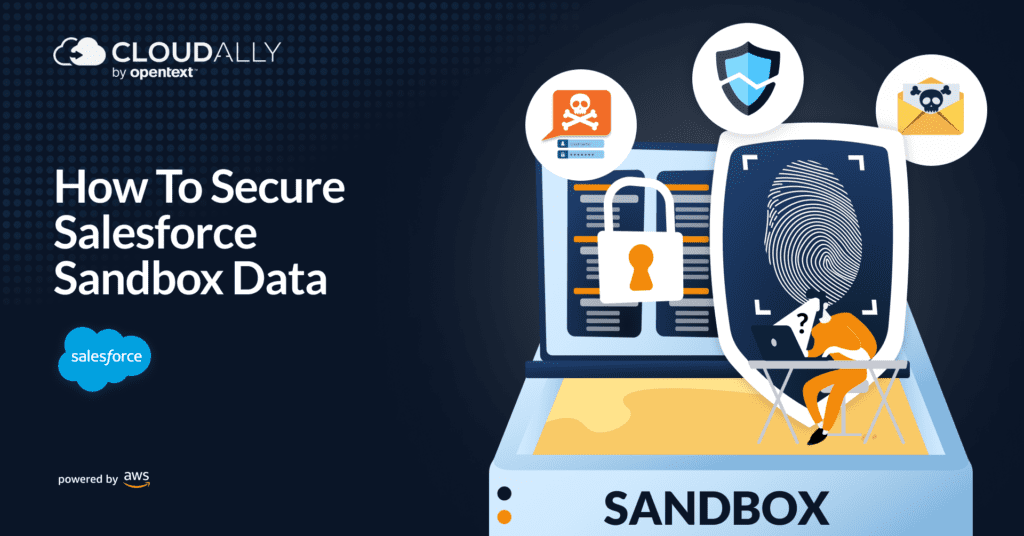Salesforce Sandbox testing is a great way to optimize your testing and QA processes. They are essential tools for developers and administrators to test their work before deploying it to production.However, if you don’t protect your Salesforce sandbox data, it can become a significant vulnerability that may lead to data breaches. This is because your sandbox data holds a replicated copy of your production data compete with Personal Identifiable Information (PII). A breach of your Salesforce sandbox is a breach of your business-critical production data. So how do you secure your Salesforce sandbox data? Read on for three best practices to protect your Salesforce sandbox data along with practical pointers.
What are the Different Types of Salesforce Sandboxes
Each type of sandbox has its unique features and use cases, making them suitable for specific needs. Understanding the types of sandboxes available is crucial in choosing the right one for your organization’s needs. There are four types of sandboxes available in Salesforce: Developer, Developer Pro, Partial Copy, and Full Copy.
- Developer sandbox: This is free and is designed to accommodate individual developers.
- Developer Pro sandbox: This, on the other hand, allows multiple developers to work on a single sandbox, making it ideal for teams.
- Partial Copy sandbox: As the name suggests, only contains selected data from the production org.
- Full Copy sandbox: This contains a complete replica of the production org.
While each of these sandboxes have a varying amount of replicated production data, know that all employees, vendors, and partners can access the sandbox data throughout the process of building, testing, and releasing code. This leaves it vulnerable to a data breach.
3 Ways to Protect Your Salesforce Sandbox Data
#1 Regulate Sandbox Access (As You Would Production Access)
In today’s digital age, data privacy has become an increasingly important concern. One simple way to secure your data is to restrict access to authorized users only. This is particularly important in your sandbox environment, where you are testing and experimenting with new ideas. By limiting access strictly on a need-to-know/access basis, you can greatly reduce the risk of data breaches and ensure that your sensitive information stays safe.
To accomplish that, set up Salesforce sandbox user roles with the correct access privileges. Start with understanding the access and development needs of the various Salesforce users. Use that as a guide to create and assign roles and permissions. This process requires careful planning and thorough documentation, as well as ongoing monitoring and adjustment as roles and responsibilities change over time. Remember to ensure that users are properly trained and aware of their access privileges to maintain a secure and compliant Salesforce environment.
#2 Encrypt Your Salesforce Sandbox Data
Are you manually replicating your production data for your Salesforce sandboxes or are you using a third-party tool to seed them? Either way, ensure that your Salesforce data is encrypted in-transit and at-rest. If you’re manually seeding your sandboxes, consider using Salesforce Shield to encrypt them. Enable the Shield Platform Encryption on the production org, and that will copy all encryption settings to the sandboxes too.
#3 Mask/Anonymize Salesforce Sandbox Data
Finally, don’t forget to mask or anonymize your Salesforce sandbox data. In the event that they are breached, as the PII is obfuscated, it will not put you at risk. Which is why data security best practices and global regulatory laws, the GDPR , CCPA, HIPAA, SOX, and PIPEDA, mandate data anonymization of data.
Consider Third-Party Salesforce Seeding and Anonymization
The task of manually seeding the Sandbox can be time-consuming and error-prone. With automated sandbox seeding, both the test data is optimized and you can speed up your development and QA cycles. CloudAlly Salesforce Backup secures your Salesforce data and metadata with secure backup on AWS S3 storage. What’s more it includes out-of-the-box support for Salesforce sandbox seeding and Salesforce compare to compare your data or metadata across backups and/or your production Salesforce database. All while securely encrypting all your Salesforce data (sandbox included) with AES 256-bit encryption at rest and SSL in transit. Our Spring release also includes data anonymization with a simple toggle switch – keeping you compliant with regulations and keeping your data abstracted from breaches.
Watch how you can anonymize your Salesforce sandboxes with CloudAlly
Try it out yourself! Here’s a free, full-feature 14-day trial of Salesforce Backup (no commitment, no payment details, special pricing for nonprofits and edu)



